How to sheathe a door made of wood, metal
The simplest and most popular way to make a door look attractive is to upholster it with some material. This can be done both indoors and outdoors, you only have to use different materials and different technologies. But in any case, the process is called "door padding". About all the subtleties and nuances - below.
The content of the article
How can you knock the doors
There are two types of door upholstery - soft and hard. Soft is made of two materials - dermantin (leatherette) and vinyl leather. Dermantin is a woven cotton base covered with a nitrocellulose film. This material was popular in the 40-60s of the last century, as it was practical and inexpensive. A little later, vinyl leather appeared.
A little about vinyl leather and leatherette
This material is made on different bases - woven and non-woven, stretch and not. Accordingly, artificial leather has different properties. A layer of polyvinyl chloride (PVC or PVC) is applied to the base. It is more durable, chemically neutral. It has only one significant drawback - it reacts poorly to ultraviolet rays - it loses its elasticity, changes color, and may crack. Therefore, the upholstery of doors facing directly to the street is undesirable with vinyl leather. There is, however, a material with increased resistance to UV rays, but this is a special material and you need to pay attention to this when buying.
Now about a little confusion in terminology. Dermantin in its pure form, such as it was in the last century, has not been produced for quite some time. There are different types of vinyl faux leather instead. There are also materials coated with other polymers, but there are not many of them. From old memory, they are all called dermantin or leatherette (although it is correct, by the way, to say "leatherette" without "n"). So, seeing this name, it is necessary to clarify what kind of material is meant, since the properties and prices differ significantly.
Despite the fact that the material is essentially one, it has different characteristics and appearance. There are elastic types that stretch well, there are hard ones that are difficult to stretch. In addition, modern artificial leather has many colors and shades, it can have a different surface structure:
- smooth - shiny and matte, there is even a metallic effect;
- porous;
- structured, imitating different types of skin (snake, crocodile, etc.).
So the choice of soft upholstery materials for the door is extensive. Apparently, this is the determining factor in the popularity of this type of door upholstery.
Hard padding for door
There are more hard upholstery materials for doors, although they are used less often:
- MDF panels with a thickness of 8 mm to 18 mm;
- natural wood - fragments, solid wood;
- veneer;
- laminate;
- plastic;
- postforming.
From this list, most often the doors are trimmed with MDF plates / panels. Such upholstery is especially popular for decorating metal doors, including homemade ones. The panels are made according to the dimensions of a specific door leaf, after which they are installed on glue or polyurethane foam in fixed starting strips. In this case, it makes sense and make slopes from MDF.
Practically, the door is also clad with other materials - laminate, plastic, postforming.Starting profiles are installed along the perimeter of the door, into which trim fragments cut to size are inserted. It's simple, if you have basic skills in working with a drill, saw and hammer, you can do it yourself in a few hours.
Door upholstery with dermantin
The most popular way of door trim is with artificial leather. Such a department allows, simultaneously with improving the appearance, to increase the indicators of heat and sound insulation. But this type of door upholstery has its drawbacks - this is the most complex technological process that requires at least a general understanding of the procedure.
Upholstery methods
It will be about the technology of door upholstery with dermantine. It can be attached in two ways: with a roller along the perimeter of the door leaf and without it. Depending on this, the order of actions changes (more on this later).
Further, a geometric pattern can be formed on the surface of the upholstery using nails and constrictions. Several options in the photo below.
For constrictions, you can use the same material with which the doors were upholstered. It is cut into strips 2.5-3 cm wide, attached to the upper nails, and then by pulling and fixing for the next nails, a pattern is formed. To fix the strip, you can wrap it around the not completely driven nail, which is then hammered. But this option is suitable if decorative nails have large caps. If the caps are small, the strips are nailed.
Also, the pattern can be formed using a thin metal flexible cable, but it is more difficult to fix it - it bends worse.
How and what to attach leatherette to the door leaf
If upholstery of a wooden door is necessary, questions usually do not arise - they are fastened with staples from a stapler, then they are nailed along the contour with decorative nails. Only here there are nuances: the staples should be with a wide back (at least 1 mm), and the nails should be wallpaper, with a wide head. The step of installing the fasteners is from 2.5 to 7 cm, if desired.
More questions arise when it is necessary to cover an iron door with dermantine. There is only one way out - to put on glue. Glue is usually used "Moment", but you can use any other universal glue that can be used to glue both metal and leatherette. They grease the strip from the inside (the strip that goes along the perimeter of the door and closes the joint of the canvas with the door frame). When fixing vinyl leather, it is cut out with a margin of 15 cm, just for the fold from both sides to the wrong side.
Materials for heat and noise insulation
Foam rubber is most often used for door insulation. It is inexpensive, if desired, it allows you to form a volumetric convex pattern. The most common case is two layers of foam rubber, 1 cm each. This option is not the best - the foam rubber has almost no effect on the soundproof properties of the door, and this is sometimes very important. In addition, after 3-4 years, it loses its elasticity, begins to stick together, it is necessary to do the constriction of the door, although the appearance of the leatherette is still quite decent.
All this is true, but there are no worthy competitors for foam rubber yet. There are materials with certain properties that can be laid instead of one of the layers, and the second one will still be foam rubber. For example, to improve sound insulation properties, you can use "Isoton". It is used for heat and sound insulation of cars. It is sold in small sheets, an adhesive composition is applied to the back, protected with plastic wrap. So there will be no problems with the installation. The disadvantages are the price and the rather large weight of the material. To avoid problems, it is worth replacing the loops with more powerful ones.
There are two other materials used in the automotive industry with similar properties. These are "Splen" and "Vibro filter". All of them are made on an adhesive base and can be used to improve the characteristics of the door.
How to knock a wooden door
It is more convenient to work on a removed door, but if this is a problem, you can also knock on the spot. First you need to remove all the accessories from the door leaf - locks, latches, door peephole. If there is old upholstery, carefully remove it. If part of the door requires repair, the damaged fragments are removed, replaced with cut-to-size wooden ones. The slots can be covered with putty or foamed with polyurethane foam with a low expansion coefficient.
If there was a pattern on the upholstery, and in principle it suits you, we drive ordinary nails into the places where the nails forming the pattern were driven in. We do not completely hammer them in, the hats should stick out by 1-1.5 cm. With their help, we will then break through the foam rubber and upholstery in the right places (just press with your fingers, all the layers are sold). We will pull out the usual nails, install decorative nails in their place, use the tape to form a pattern. The procedure is simple.
With roller
To make the end of the door look no worse than the rest of the plane, we start with it. If you are not going to finish one of the sides, skip this stage, just paint the butt end with paint to match the finish on one or the other side. If we cover the doors on both sides, we cut out a strip of material about 10 cm wide. More precisely, look at your door, since the thickness of the canvas is different. The strip should cover the end and go on one and the second side by 3-4 cm. Lay the strip, fasten it along the edge with staples from a stapler (faster and easier) or with nails with a large flat head.
A strip of material is also needed to form a roller. Width - 10-15 cm, depending on how wide you want the roller. Then there are two options:
- Directly shape the cushion. For this, a tourniquet of foam rubber or batting is laid in the middle of the strip, crimped in the middle. In this form, it is fixed around the perimeter of the door. After, on top, foam rubber and material are laid. The material is folded inward to form a neat edge.
- The roller is formed later, after the vinyl is laid on the canvas. Here the technology is different - the strip is attached around the perimeter, face down. Then the foam rubber and upholstery are attached. The edges are not tucked up, just cut to size. After the end, the strip is wrapped on the front side (you can put a strip of foam rubber in it), bend and fasten with wallpaper nails.
The difference between these two methods is only in appearance: in the first case, nails are nailed along the edge of the upholstery (pictured on the right), in the second - along the edge of the roller (pictured on the left). They choose who they like best. For example, it seems to me that the first option (on the right) looks better - more accurate. But this is just a personal opinion.
What is this roller for? In order to close possible gaps between the canvas and the jamb. Thus, we avoid the appearance of drafts and reduce heat loss. But you can make a roller only if the doors are upholstered from the opening side (the doors open inside the apartment, and we upholster them from the inside). If on the other hand this trick does not work, it will not close. Then you have to do without a roller.
Without roller
In this case, everything is simple: the canvas is tucked exactly, fixed with nails or staples - whoever suits best.
Door upholstery process in photo format
To reduce the noise level, the doors are upholstered with one layer of sound insulation and one layer of foam rubber. The option with preliminary production of the cushion is selected. First, they removed the old fittings, cut in a new lock. The pads and the handle were removed, the inner parts remained in place. We proceed to the upholstery of the doors.
We immediately form a roller - we put a narrow foam rubber in a strip of dermantine, fasten it along the perimeter of the door. It is more convenient to do this with staples from a stapler.
The next step is to provide soundproofing.It is glue-based, so there is no problem - it was cut to size, carefully removing the film and glued. While gluing, we try to squeeze out all the air, for this we tear off the film gradually, ironing the material from edge to edge.
Now we attach 1 cm thick foam rubber. In this variant, the most convenient way is to use staples from a construction stapler. First, we fix it along the perimeter, then often along the surface of the door, so that the foam rubber fits tightly.
Foam rubber is cut out with a small margin, after installation, the excess is cut off.
Next, we attach the upholstery. It is cut 15 cm longer in length and width. This stock will go to the folds to form a neat edge.
Tuck the upper edge by 2-3 cm, start fastening from the upper left corner. There we hammer the first nail, then straighten the material and nail the second one at the top right. Then, with a step of 3-4 cm, we nail the upholstery with finishing nails from one edge to the other.
Fasten from the hinge side, turning the edge inward. Spread it straight out so that there are no creases at the top.
After that, the same operation is repeated from the side of the castle, then below. Actually, the door upholstery is almost finished, you just need to install the fittings in place.
Video tutorials on the topic
Vinyl leatherette for door upholstery is sold both in meters and in sets. In some sets, the fastening method may be different: they have plastic profiles that are attached along the perimeter of the door leaf. These profiles have a fixation system of the type used in stretch ceilings.
The following video captures the process using roll material.
How to insulate and upholster the front door. The technique of forming a roller of the second type - it is nailed down last.
How to upholster metal doors
The front part of metal doors is rarely upholstered - it already has a completely attractive appearance. The inner part suffers more often. Let's talk about this.
On the inside of the iron door there is a frame. In some models it is metal, in others it is wooden. Heat-insulating material is placed between the frame slats. This can be polystyrene or rock wool slabs. They are attached to mounting foam, which has a very low expansion coefficient (required!). From above, everything is closed with a sheet of plywood or OSB. This is the standard option. If the planks are wooden, everything is fine, there are no problems - the doors will not freeze. But if the frame inside the door is metal, in good frosts everything will freeze through and through - through the bridges of cold, which are metal ribs. To prevent this from happening, a layer of "Isotone" or "Splena" is again laid on top of the foam / mineral wool, and plywood is already on them.
The rest of the processes for upholstering a metal door are very similar to those described above. The whole difference is in the method of fixing: the upholstery is glued to a suitable high-quality glue. The excess is immediately cut off at the junction using a sharp wallpaper knife.
This is where the classic mistake was made - there is no layer cutting off the cold bridges. Otherwise, everything is shown well.

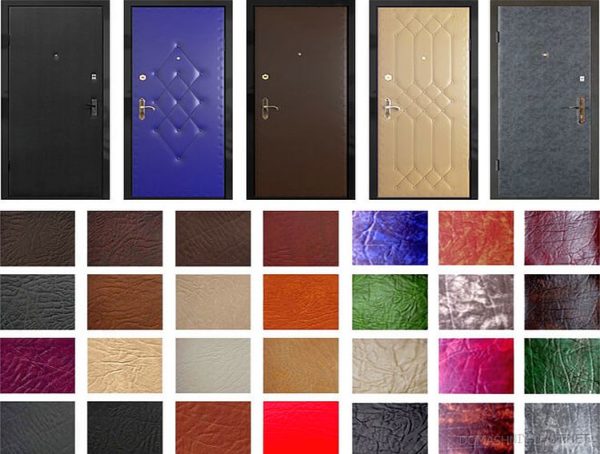
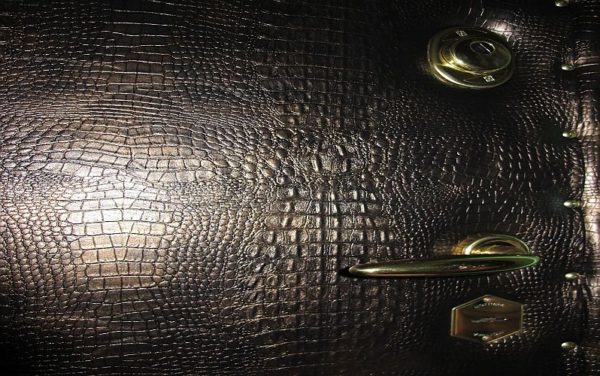
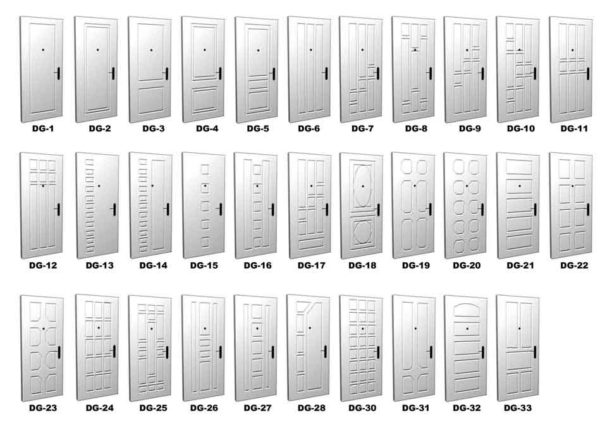

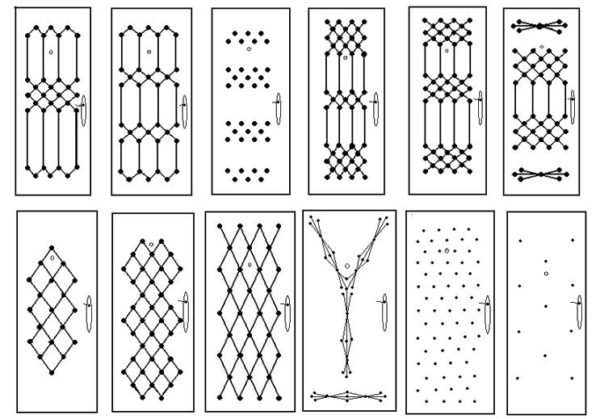
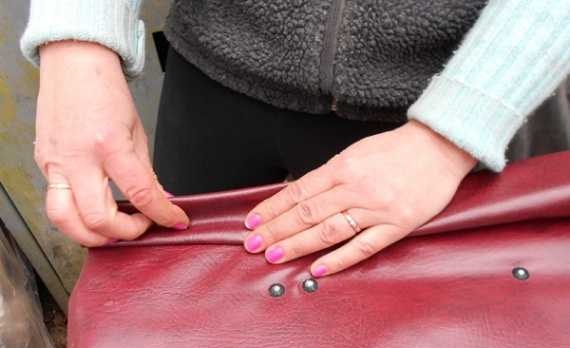
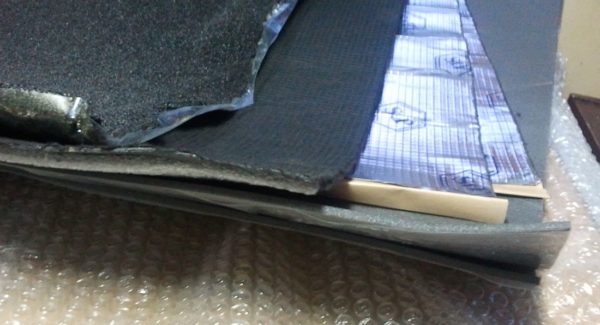
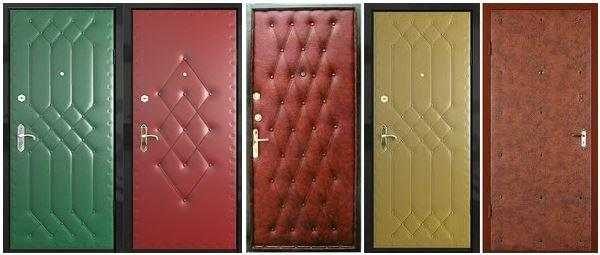
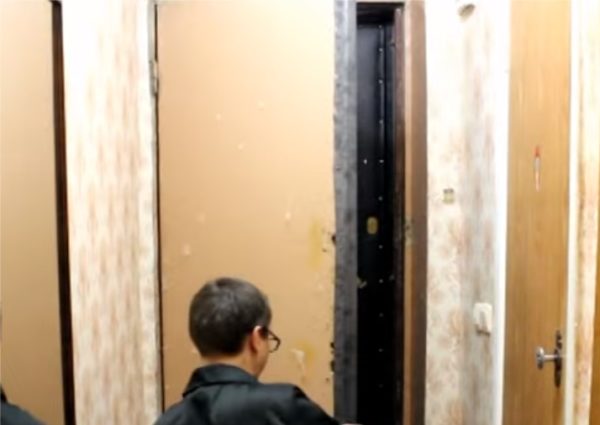
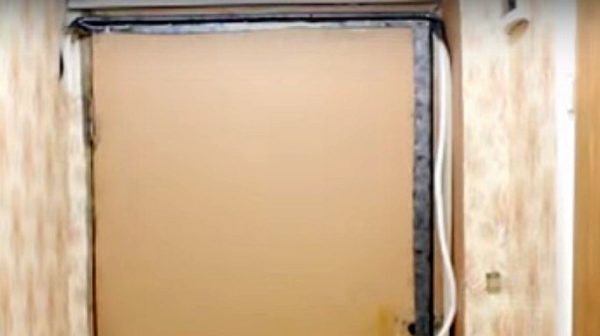
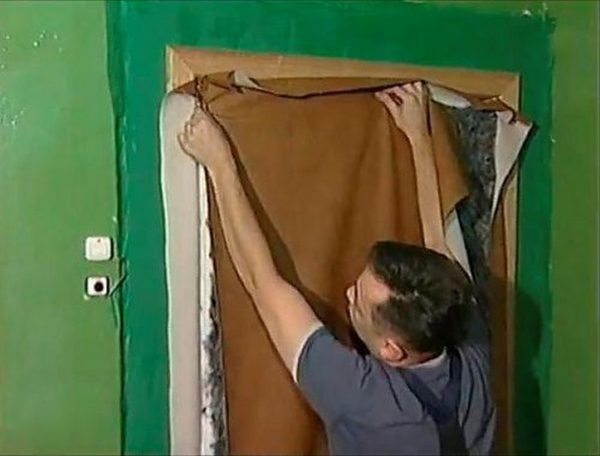
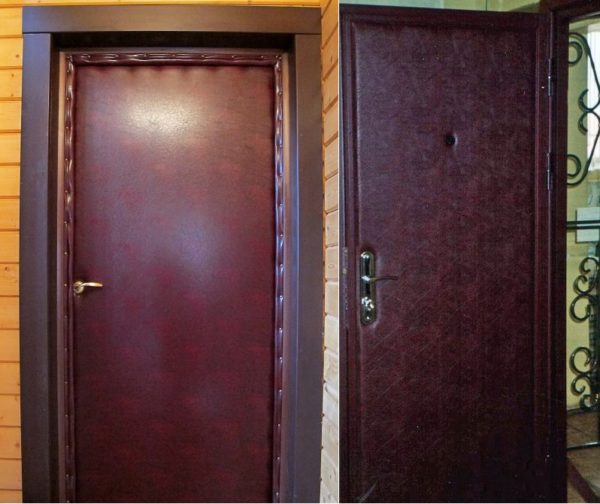
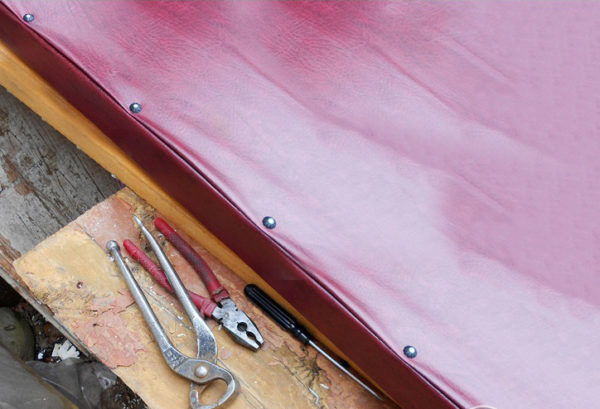
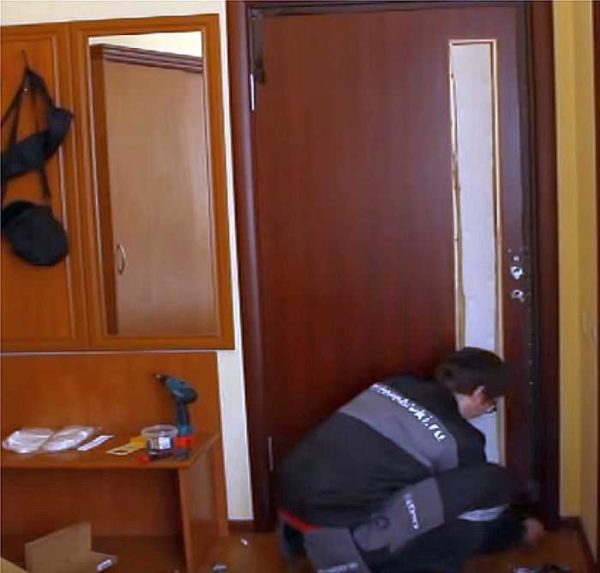
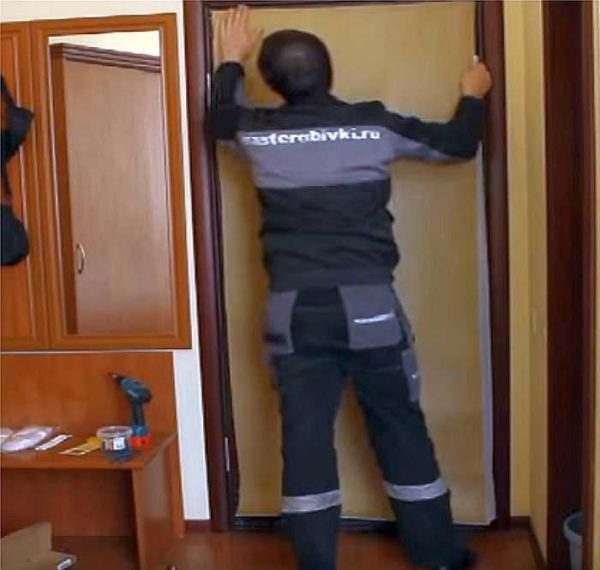
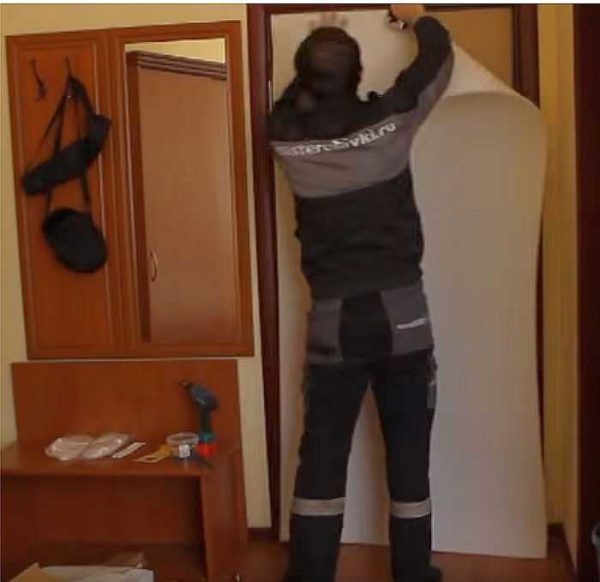
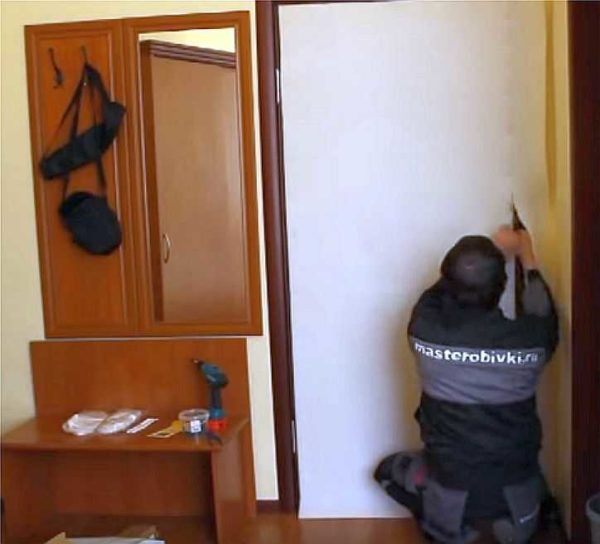
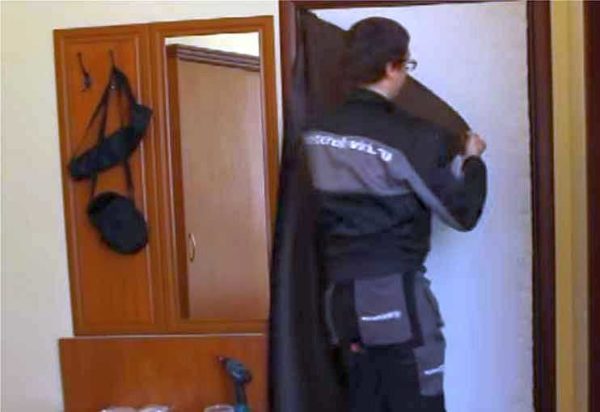
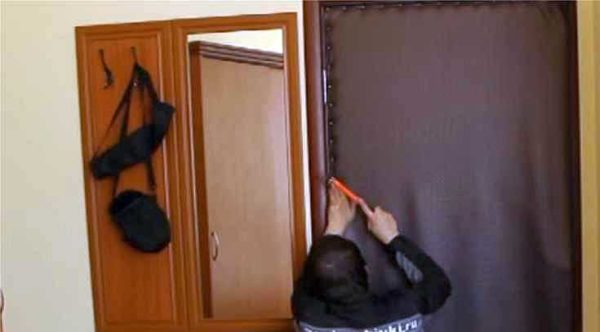
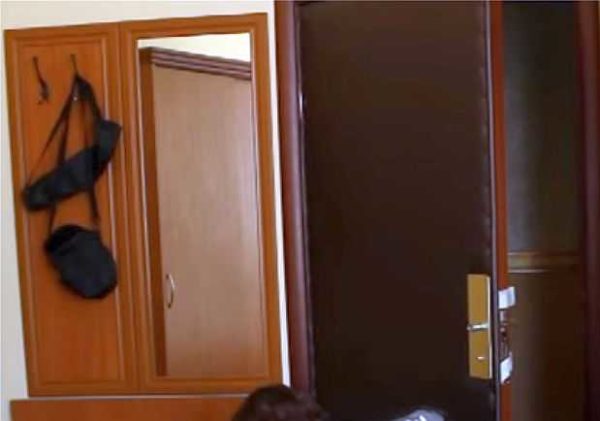
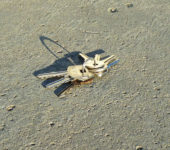
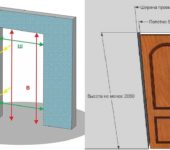
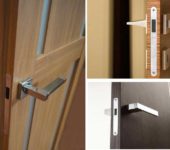







You always look at someone else's, especially professional, work, it’s so beautiful ... But if you yourself start knocking the doors off, first of all, it turns out that this is a rather difficult task - you need, after all, so that the upholstery does not warp, lie flat, and even the rollers, hiding the gap between the door and the jamb were even. As a result, it is no longer up to beauty - what kind of patterns to fill with carnations, I figured out the door itself and that's good. And if you can't remove the door from its hinges, it's generally torment, there was an experience of such homework.
Thanks for sharing your experience.
upholstery doors hands make themselves. and the owners of fools every second